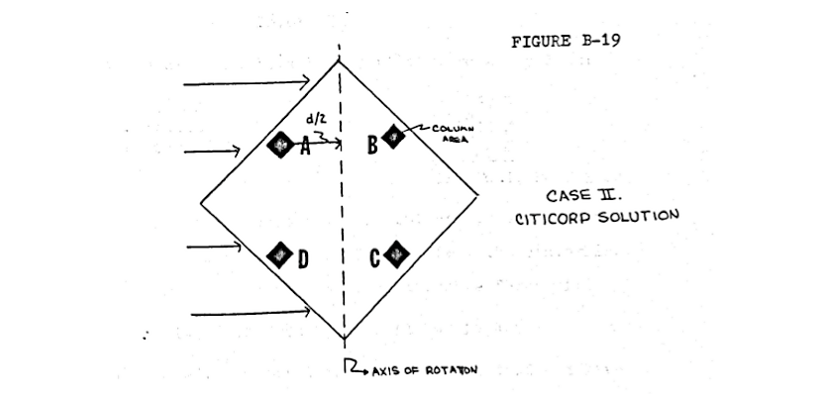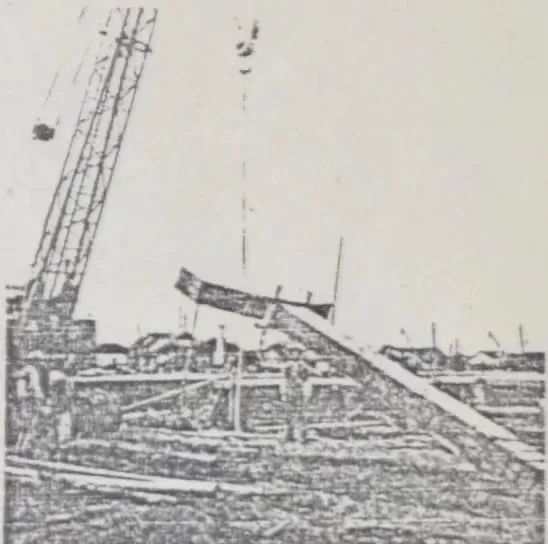Source: Geotech along the way
. 
Two conditions of Citigroup headquarters building: 1960 was the golden age of the United States
. 
Relying on the dividends of World War II, the United States entered the period of its greatest national strength
. 
In the re division of global power, the United States has taken the lead and led the rapid development of its domestic economy
. 
Citicorp has also benefited from the wave
. 
At the beginning of 1960, its headquarters on Park Avenue in Manhattan became more and more incompatible with the company’s continuous growth and expansion
. 
Citigroup needs to build a new, visible skyscraper
. 
Meanwhile, St
. 
Peter’s church at 601 Lexington Avenue is worrying about its aging
. 
St
. 
Peter’s church was built in the early 20th century
. 
Its original purpose was to provide a place of worship for the congregation
. 
The church before 1960, 60 years later, has become dilapidated
. 
Lexington Avenue, which was still a suburb at that time, has become a prosperous financial center of New York
. 
The site of the church has become a financial center for every inch of land and money
. 
In the case of lack of funds, in order to seriously repair the church, the church began to consider selling its valuable property in 601
.
As if by destiny, Citigroup’s contact with St
.
Peter’s church is so natural
.
Negotiations with St
.
Peter’s church are not easy
.
In any case, the church is reluctant to move away
.
Finally, it took Citigroup five years and $40 million to reach an agreement with the church on the sale of land 601
.
In the agreement, St
.
Peter’s church needs Citigroup to accept two special conditions before it agrees to sell the land: 1
.
Build a new church for the church on the original site; 2
.
No structure is allowed to pass through the church in the new building
.
The second condition makes it difficult for Citigroup
.
If this is to be done, it means sacrificing valuable office space
.
The inspiration on the napkin also challenges the second condition: stubbins, chief architect of Citigroup’s new building, and le messurier, chief structural engineer, who have been pondering over the plan for the new building for several weeks
.
Stubbins is a renowned architect in New York
.
He studied at Georgia Tech as a student and obtained his master’s degree at Harvard
.
At Harvard, he studied with Walter Gropius, one of the founders of Bauhaus movement
.
Hugh stubbins Le messurier, the chief architect of the building, is also a renowned structural engineer
.
As a partner of stubbins, he has completed the design of many landmarks
.
Le messurier first studied mathematics at Harvard and then earned a master’s degree in construction engineering at MIT
.
William Le messurier, chief structural engineer of the building, has considered several schemes for the relationship between the church and the new building, but limited by the harsh second condition, they still have no idea how to maximize the space of the church
.
One night, while sitting in a Greek restaurant in Cambridge, Le messurier was working on a long-standing project
.
Usually, structural engineers hope that the columns of a building will be evenly placed at a certain interval, so that the weight of each floor will pass down through the simplest and clearest path, which is convenient for engineers to make a clear analysis of the stress and safety of the building
.
In the conventional layout plan, the gray rectangle is the column
.
However, too many columns will affect the internal space division of the building
.
If you want to have open space inside the building, you need to reduce the layout of columns
.
Finally, the building may be optimized to be supported by only a few large columns
.
The layout plan after column optimization is not so simple in the project of Citi’s new building
.
If adjusted according to the above plan, the pillar in the upper left corner will conflict with the position of the church
.
Unless the upper left corner of the building space is sacrificed, the columns are retracted to give way to the position of the church
.
The position of the pillar in the upper left corner conflicts with that of the church
.
All of a sudden, Le messurier’s inspiration came
.
He took the napkin on the table and drew the sketch
.
In Le messurier’s scheme, the columns originally arranged around the building are moved to the middle, and the whole building is located on the ground in the form of “walking on stilts”
.
The plan (left) and elevation (right) of the adjusted building seem to be a plan with the best of both worlds
.
The new layout not only avoids the conflict with the church, but also retains the space of the building to the greatest extent
.
However, after the columns moved to the middle, the two ends of each floor of the building lacked support and became unstable cantilevers
.
In order to solve this problem, inspired by the tree, Le messurier designed a bold “v-truss” system
.
If the middle column is the trunk, the V-shaped truss is the branch, which transfers the weight of the floor to the column safely and stably
.
V-truss system, it’s an exciting night
.
It’s not only a solution to weeks of distress, but also such a bold plan, if implemented, will undoubtedly become a new landmark of New York
.
In 1977, the building was built and named Citicorp center
.
The huge V-shaped trusses were regarded as genius inventions by Le messurier
.
He even tried to persuade stubbins, a good friend of the architect, to put them on the most prominent exterior of the building, but failed
.
“I’m conceited,” Le messurier said in an interview
.
“I wanted my masterpiece to be displayed outside the building, but stubbins didn’t agree
.
Finally, I told myself that I didn’t care at all – it was there and God would see it
.
” On a warm day in June 1978, Le messurier received a call from an engineering student, Diane Hartley, in his office in Cambridge, Massachusetts
.
Hartley said her professor asked her to write a thesis on Citigroup’s headquarters building as an undergraduate graduation
.
When the building was completed in Manhattan a year ago, it was the seventh tallest building in the world
.
While Diane Hartley was preparing his thesis, Hartley got the relevant information of the building from an assistant engineer of Le messurier company and reviewed the structural engineering of the building
.
During the review, she found that the wind resistance performance of the building was different from that of conventional buildings
.
For conventional buildings, because there are columns at four corners, the wind perpendicular to the building surface is usually the most unfavorable stress condition
.
In conventional building design, vertical wind is usually the most unfavorable condition, but for Citigroup headquarters building, Hartley found that the internal force of the building under diagonal wind (the wind direction is parallel to the diagonal of the building) is significantly higher than that under vertical wind
.
After checking the diagonal wind in Hartley’s paper, Hartley thinks that the building is not enough to resist the load caused by diagonal wind
.
After submitting the paper, her teacher mentioned the same query in her reply
.
So there’s the opening of a conversation with Le messurier.
.



